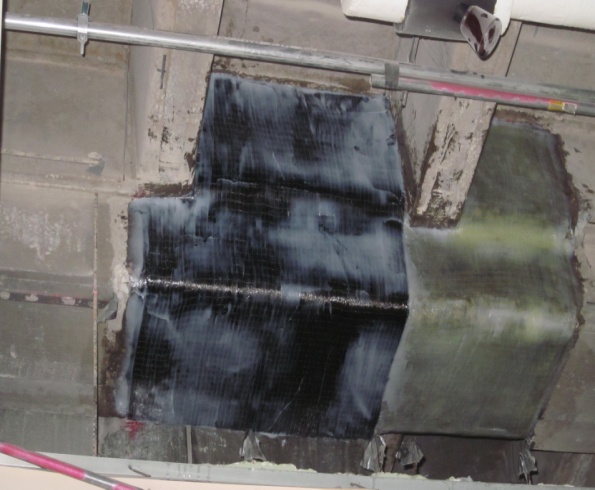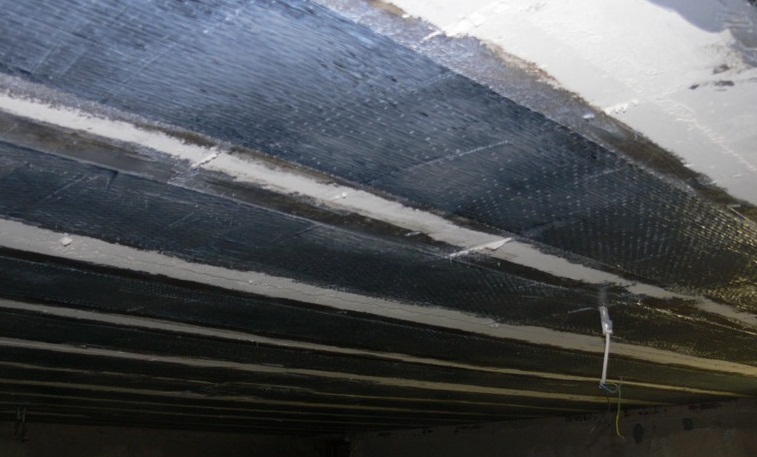В статье описаны преимущества технологии усиления железобетонных конструкций с применением композиционных материалов, армированных волокнами. Автор рассказывает о системе усиления и представляет различные свойства материалов. В статье рассмотрены проблемы долговечности и прочности полимеров, армированных волокнами, используемых в качестве материала для усиления. Также обсуждается нехватка нормативной литературы по данной технологии для проектировщиков в России.
Ключевые слова: полимеры, армированные волокнами; усиление, долговечность, внешнее армирование.
Article describes the advantages of modern method of concrete strengthening with the using fiber-reinforced polymers. The author presents the system of strengthening and regards different properties of materials. This paper deals with the problems of durability and reliability of fiber - reinforced polymers. The lack of Codes for using of this strategy in Russia is also under discussion.
Keywords: fiber-reinforced polymers, strengthening, durability, reinforcement.
In recent years, fiber-reinforced-polymer (FRP) materials have been widely adopted for strengthening structures all over the world.
FRP composites materials are formed through the physical combination of two components, of inorganic or organic fibers embedded in a resin matrix, namely fiber and the matrix.
There are very valuable properties of fiber thanks to which its use constantly widens. FRPs are lightweight, strong, nonmagnetic, and, for the most part, non-corrodible. It is the last property that is particularly attractive to designers [1]. Fibers provide strength and stiffness to the composite and act as the main load carrying component.
Fibers used in modern composites can be broadly classified into 3 main categories [2, 3]:
- Polymeric fibers including aramid fibers (AFRP);
- Carbon fibers including pan-based carbon and pitch-based carbon (CFRP);
- Inorganic fibers including E-glass, S-glass and Boron fibers (GFRP and others).
By selecting among the many variable fibers, geometric and polymers, the mechanical and durability properties can be tailored for a particular application. This synthetic quality makes FRP a good choice for civil engineering applications as well [4].
Figure 1 shows typical stress-strain properties of these three materials and steel.
Fig. 1. Schematic stress-strain curves for different types of FRPs.
The matrix binds the fibers together allowing shear transfer between fibers and serves as a protective barrier as well.
The matrix can be thermoplastic resin or partially cured thermoset resin. The role of the resin in composites is vital. Resin selection controls the manufacturing process, flammability characteristics, and corrosion resistance of the composite. Although, loads are carried by the fiber composite, mechanical performance depends to a large extent on the resin modulus, failure strain and the bond between the resin and the fiber.
FRP reinforcements are joined to the structure by means of adhesives and they work therefore with a resistant mechanism based on adhesion between the materials.
Due to the relatively low elastic modulus, linear elastic behavior and limited strain capacity of FRP's, concrete members reinforced with FRP reinforcement exhibit a brittle failure mode [5].
The main advantages of the system are as following:
- Joint works of compounds of external reinforced elements with strengthened structure on all levels of its loading (such work is provided with safe adhesive bonding);
- High durability and resistance to corrosion;
- High mechanical characteristics (strength and elasticity coefficient) of material components for strengthening;
- Relatively high elongation of materials;
- Minimal intervention in structures being strengthened;
- Simplicity of installation and low proper weight.
Limited research on durability issues has resulted in limited design guidance with the most comprehensive treatment given by ACI 440.2 [6].
Durability of FRP is defined as its ability to resist cracking, oxidation, chemical degradation, debonding, wear, fatigue, and the effects of damage from foreign objects for a specified period of time under appropriate load conditions and under service exposure conditions [7]. In the case of strengthening reinforced concrete with FRP, the main regions of durability consideration are the FRP composite itself, the concrete-to-composite interface in addition to the existing reinforced concrete element [8].
The use of such materials as reinforcement for concrete structures requires the development of design procedures that ensure adequate safety from catastrophic failure. Design recommendations for concrete members reinforced or strengthened with FRP are based on the limit - states design principles. Design of concrete structures reinforced with FRP is based primarily on the required strength and then checked for serviceability criteria, fatigue endurance, and creep rupture endurance.
The technics is nearly perfect but there are some factors to be solved. Nowadays there’s no required regulation base in our country: codes, standards. One can use only 2 sources while designing structures of reinforced concrete with FRP: Guidance on strengthening reinforced concrete structures with FRP materials and Code Rules. However the strategy used in this literature is based on the achievements of the Soviet period. The developers use Bulletin in English which is not being an official normative document in Russia [9].
The promise of FRP materials lies in their high-strength, lightweight, non-corrosive, non-conducting, and nonmagnetic properties. In addition, FRP manufacturing offers a unique opportunity for the development of shapes and forms. It would be difficult or impossible with conventional steel materials. Although the fibers and resins used in FRP systems are relatively expensive compared with traditional strengthening materials, labor and equipment costs to install FRP systems are often lower. FRP systems can also be used in areas with limited access where traditional techniques would be impractical [10].
Fig. 2. An application of carbon fiber reinforced polymers in USA.
Fig. 3. Strengthening of reinforced concrete beams in Russia.
However, it is crucial to ensure that FRP strengthening systems are durable and capable of providing the design strength over the life history of the structure. Certain environmental conditions such as temperature, humidity, wet-dry cycles, freeze-thaw cycles, and ultraviolet exposure could have an adverse effect on the FRP strengthening systems and should be investigated extensively.
FRP materials can provide increase in strength and stiffness to existing constructions when bonded to the web and tension face. The results of researches indicate great potential of such materials while strengthening structures in civil engineering.
Литература:
References:
- Janet M. Lees and Chris J. Burgoyne. Experimental Study of Influence of Bond on Flexural Behavior of Concrete Beams Pretensioned with Aramid Fiber Reinforced Plastics. ACI Structural journal, title no. 96-S41, may-june 1999, p. (cтр.) 377-386
- Lewin, M. and Preston (eds), J. High Technology Fibers, Part B, Marcel Dekker. New York, 1989.
- Donnet, J.B. and Bansal, R.C. Carbon Fibers, Marcel Dekker, New York, 1984.
- Tom Norris, Hamid Saadatmanesh. Shear and flexural strengthening of R/C beams with carbon fiber sheets. Journal of structural engineering. July 1997. P.903-911
- Use of glass FRP sheets as external flexure reinforcement in RC beams Tarek H. Almusallam and Yousef A. Al-Salloum. Department of Civil engineering, King Saud University, p. 1-15
- ACI 440.2R-02 (2002) Guide for the Design and Construction of Externally Bonded FRP Systems for Strengthening Concrete Structures. American Concrete Institute (ACI), Committee 440, USA.
- ACI 440L (2005) Durability of Fiber Reinforced Polymer (FRP) Composites Used With Concrete. American Concrete Institute (ACI), Committee 440, Draft Report.
- S.T. Smith, R. Kaul, R. Sri Ravindrarajah, O.M.A. Otoom. Durability Considerations for FRP-Strengthened RC Structures in the Australian Environment. Centre for Built Infrastructure Research, Faculty of Engineering, University of Technology, Sydney, Australia
- Yana Y. Grigoreyeva. Problems of the use of strengthening of flexible reinforced concrete structures with external carbon fiber reinforcement. Industrial and civil construction Journal. №11 (2011), p.60-61
- Sami Rizkalla, Tarek Hassan, Nahla Hassan. Design recommendations the use of FRP as reinforcement and strengthening of concrete structures. P.1-33





